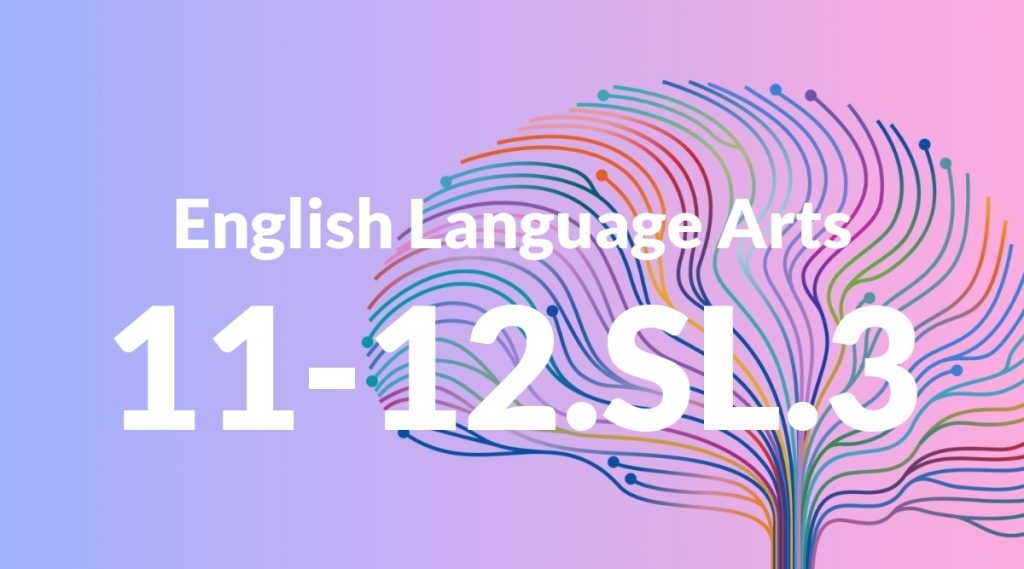Standard: 11-12.SL.3 – Evaluate a speaker’s point of view, reasoning, and use of evidence and rhetoric, assessing the stance, premises, links among ideas, word choice, points of emphasis, and tone used.
Grade level: Grade 11-12
Subject: English Language Arts
Domain: Speaking & Listening
Teacher Overview
This standard emphasizes the importance of evaluating a speaker’s point of view, reasoning, and use of evidence and rhetoric. By mastering this standard, students will be better equipped to critically assess and engage with various forms of communication, which is essential for their academic and personal growth. Students should be familiar with basic rhetorical devices, logical fallacies, and the distinction between fact and opinion. They should also understand fundamental aspects of effective presentations and speeches.
Mastering this standard will enable students to develop advanced critical thinking and analytical skills. They will be able to engage deeply in academic discourse, construct well-reasoned arguments, and critically evaluate diverse forms of communication.
Common Misconception 1
A common misconception is that all evidence presented by a speaker is equally valid. This is incorrect because evidence can vary greatly in terms of reliability, relevance, and context. Students need to learn how to critically evaluate the quality of evidence.
Intervention 1
An effective intervention is to provide students with diverse examples of evidence and guide them through the process of evaluating each example’s credibility, relevance, and context. This can be done through structured activities and discussions.
Common Misconception 2
Another misconception is that a speaker’s tone does not significantly impact the message. This is incorrect because tone can greatly influence how the message is received and interpreted by the audience. Understanding the impact of tone is crucial for effective communication.
Intervention 2
To address this misconception, teachers can use audio and video examples to demonstrate how different tones affect the audience’s perception. Students can then practice identifying and analyzing tone in various speeches and presentations.
Prerequisite Knowledge
Students should have a foundational understanding of basic rhetorical devices, logical fallacies, and the ability to distinguish between fact and opinion. They should also be familiar with basic presentation and speech elements.
Subsequent Knowledge
After mastering this standard, students will develop advanced critical thinking and analytical skills, enabling them to engage more deeply in academic discourse, construct well-reasoned arguments, and critically evaluate diverse forms of communication.
Instructional Activities
- Analyze a political speech for rhetorical devices and evaluate the effectiveness of the speaker’s arguments.
- Watch a commercial and identify the persuasive techniques used. Discuss their effectiveness.
- Read a news article and assess the credibility of the sources cited.
- Participate in a debate and evaluate the arguments presented by peers.
- Create a presentation on a controversial topic and use evidence and rhetoric to support your stance.




